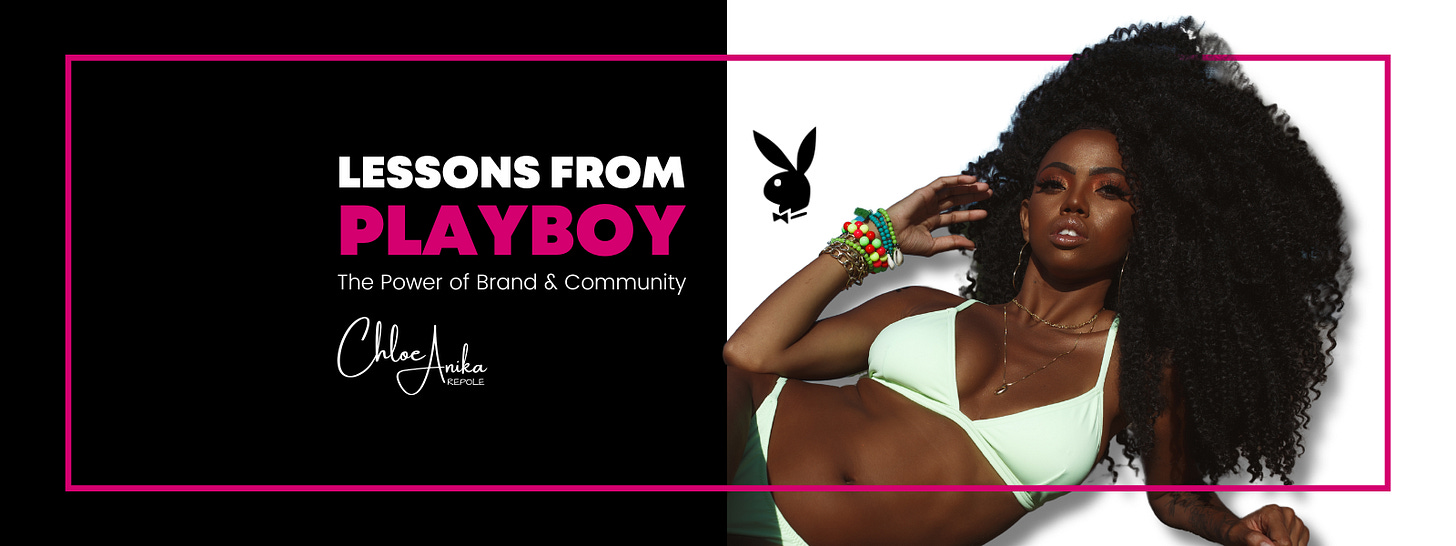The Power of Brand & Community
By definition, community is a shared space—whether physical or digital—where people align through characteristics, interests, or goals. Once rooted in geography, communities now transcend borders, shaped by culture, technology, and, yes, brands. Playboy, an empire built on controversy, allure, and reinvention, is a prime example of a brand that not only survived but thrived through cultural shifts by mastering the art of brand storytelling and audience engagement.
From Pinups to Political Commentary: The Playboy Shift
Playboy built its empire on three pillars: beautiful women, bold journalism, and a curated brand persona that straddled sophistication and rebellion. While the early days of the magazine celebrated a cigar-in-hand, unapologetic masculinity, its evolution into the digital age tells a different story—one that embraces a broader social consciousness. Today, Playboy.com features political discourse, profiles on changemakers, and a diverse range of voices, positioning itself as something beyond a men's magazine.
This is no accident. It’s a lesson in brand longevity: sex sells, but substance sustains. The famous phrase “I only read Playboy for the articles” became more than a cheeky excuse—it was a brand positioning tool. By embedding high-caliber journalism and exclusive interviews (think Martin Luther King Jr., Maya Angelou, and Jimmy Carter), Playboy attracted an audience that was not just voyeuristic, but intellectually engaged.
The Playboy Persona & Customer Avatar
The true genius of Playboy was in crafting a persona that people wanted to embody. The Playboy archetype—once synonymous with the well-dressed, well-read, and socially adept gentleman—has evolved into a broader, gender-inclusive ideal: daring, debonair, sophisticated, and worldly.
Playboy didn’t just sell magazines; it sold an identity. Fans saw themselves reflected in the brand’s aspirational qualities. By carefully curating its voice, aligning with cultural conversations, and evolving with its audience, Playboy fostered a community. And communities, when nurtured, become brand evangelists.
Influence Before Influencers
Hugh Hefner may not have known the term influencer marketing, but he understood its principles long before Instagram was a thought. The first-ever Playboy cover in 1953 featured Marilyn Monroe—an iconic move that established the brand’s credibility. But here’s the real twist: while Playmates sold magazines, the real influencers were the thought leaders featured in the interviews. These were the cultural figures who lent the brand its intellectual and aspirational weight.
Playboy mastered the art of leveraging credibility—mixing sex appeal with intellectual depth to craft an audience that felt seen, respected, and engaged.
Brand Evolution: Adapt or Fade
Despite its legacy, Playboy’s history isn’t without controversy. From feminist protests to changing attitudes about gender and sexuality, the brand has had to continuously adapt to survive. In the 1980s, the rise of the working woman challenged its traditional audience, leading to the closure of Playboy Clubs. With the internet revolution, print circulation dwindled, forcing a pivot to digital.
Yet, through reinvention, Playboy remains relevant—proof that brands can evolve without abandoning their core DNA. Its success isn’t just about provocative imagery; it’s about understanding the power of brand perception, audience psychology, and the ability to shift with the times.
Takeaway for Modern Brands
Playboy’s journey offers key lessons in brand building:
Identity is everything. Strong brands create a persona their audience wants to emulate.
Substance builds loyalty. Playboy thrived by offering more than just surface-level appeal.
Adaptability is survival. Cultural shifts are inevitable—brands that embrace evolution stay relevant.
Community is the backbone of longevity. When customers see themselves in a brand, they become its biggest advocates.
At its core, Playboy understood something many brands miss: a logo or product doesn’t make a brand—a shared identity does. If your brand can foster that, you’re not just selling something. You’re building something that lasts.
Read my original Playboy Brand Study HERE





